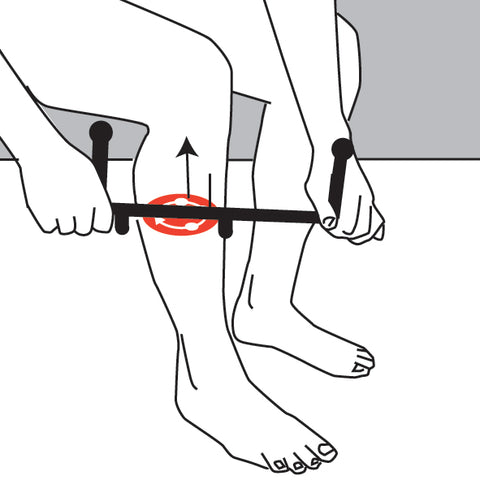Trigger Point Therapy - Foot Drop Treatment
Tibialis Anterior Trigger Points
Foot drop is one of the most common mobility problems following a stroke
Also known as drop foot or dropped foot, the condition describes the inability to lift the foot and toes properly when walking.
This in turn can lead to trips and falls, and an overall loss of confidence when walking.
The client with foot drop will find it difficult, if not impossible, to control their foot and to turn the foot and ankle upward (dorsiflexion).
As the client walks, the affected foot will flop rather than be able to be placed, with little or no strength or control of the foot.
Common Causes
Foot drop is a symptom of something else going on in the body. It is therefore vital to get immediate medical attention if these symptoms start suddenly or develop as a new condition.
Foot drop can be caused by a host of conditions lead poisoning; spondylolisthesis, a spinal cord injury; herniated disk; tumor; multiple sclerosis; Parkinson’s disease; Lyme disease; or a number of other illnesses or injuries that can weaken the central or peripheral nervous systems.
However, drop foot can also occur due to the foot lift being hampered by tight and shortened muscles caused by trigger points.

Tibialis Anterior - Common Trigger Point Site
Treatment
Dependent upon the cause of the condition, there are a number of treatments available, most of which are long-term. In some cases normal functioning can return with time and treatment—for others the focus will be on managing symptoms.
There are surgical treatments available for some clients, including bone fusion and implants that artificially fire the nerves to stimulate the foot to lift as the heel lifts from the floor.
Massage therapy (where necessary, carried out in partnership with the client’s medical team) is often extremely useful when it comes to managing the symptoms.
Trigger Point Therapy
In may cases, the drop foot is caused by trigger points in the tibialis anterior muscle.
The tibialis anterior sits along the outside of the shinbone and attaches to the top of the shinbone and descends down the leg, following the outside of the bone.
The tibialis anterior's tendon crosses the top of the foot by the inside of the ankle and connects to the medial cuneiform and first metatarsal on the bottom of the foot.
Trigger points can cause the tibialis anterior to become weaker and shorter. This can make it difficult for the client to raise the foot and lead to them tripping over their own feet’.
These trigger points are easily accessible and in most cases are relatively simple to treat.
Ask your therapist about trigger points!

Self Help
Being so accessible they are also suitable for self treatment using a pressure tool.
Stretching the muscle alongside the compression treatment may also help to dissipate the trigger points and accelerate recovery.
It's worth noting that pain from trigger points in the tibialis anterior is often diagnosed as gout or turf-toe and may be a primary cause of so-called “growing pains" in the ankles and feet of children.
This trigger point therapy blog is intended to be used for information purposes only and is not intended to be used for medical diagnosis or treatment or to substitute for a medical diagnosis and/or treatment rendered or prescribed by a physician or competent healthcare professional. This information is designed as educational material, but should not be taken as a recommendation for treatment of any particular person or patient. Always consult your physician if you think you need treatment or if you feel unwell.
Disclaimer
The information in this article is intended for educational purposes within the context of continuing education for massage therapists, continuing education for athletic trainers, continuing education for physical therapists, continuing education for chiropractors, and continuing education for rehabilitation professionals. It is not a substitute for medical advice, diagnosis, or treatment. Although every effort has been made to ensure accuracy and reflect current understanding at the time of publication, practitioners must always work within the legal scope of their professional practice and follow all regional regulatory guidelines.
Hands-on techniques and clinical applications described in this material should only be performed by appropriately trained and licensed professionals. Individuals experiencing pain or symptoms should be referred to a qualified healthcare provider for assessment. Niel Asher Education is not responsible for any injury, loss, or damage resulting from the use or misuse of the information provided in this content.

Continuing Professional Education
Looking for Massage Therapy CEUs, PT and ATC continuing education, chiropractic CE, or advanced manual therapy training? Explore our evidence-based online courses designed for hands-on professionals.


















